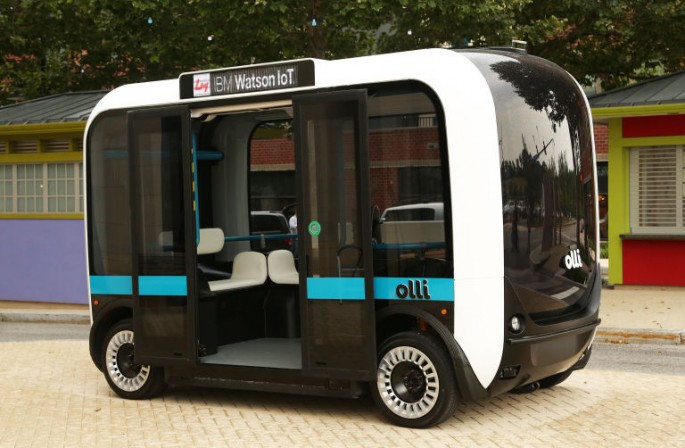A self-driving electric bus started rolling around Washington DC streets on June 16, Thursday. Olli is a robot bus designed by Local Motors, which has plans to sell 3D-printed cars this year. The 12-seat autonomous vehicle (AV) includes IBM Watson's supercomputer tech so passengers can use natural language to tell the driverless bus where they are going.
Local Motors is an Arizona-based startup company. Its shuttle bus was designed by crowdsourced contest winner Edgar Sarmiento.
Olli has over 30 sensors and receives data streamed from IBM's cloud. It will only be available in the United States capital during the next couple months, but Las Vegas and Miami are also set to launch pilot programs featuring the 3D-printed buses in late 2016.
Local Motors also has plans to test the electric vehicles (EVs) in cities outside the US. The company is now in talks with dozens of cities throughout the world including Berlin, Germany; Copenhagen, Denmark, and Canberra, Australia, according to Engadget.
It is unclear if the IBM-powered vehicle will give bus rides to people since it is being used for trial runs.
If Olli becomes available as a mode of public transportation, passengers can summon the futuristic bus using a mobile app like Uber and Lyft.
Local Motors' first Olli was produced at its brand new National Harbor location in Oxon Hill, Maryland. The city is located near Washington DC.
John Rogers is the co-founder of Local Motors. His vision is to build hundreds of global micro-factories that use a 3D printer to make a custom-built Olli within 10 hours and assemble it in just one hour.
Google has already racked up over 1.5 million miles testing AVs including customized Lexus and Toyota cars. The tech giant and automakers believe driverless vehicles will not be on the retail market for several years.
However, Rogers reported that Olli is ready for public roads. It is just waiting for a green light from US regulators, according to Phys.
The company has an advantage over other self-driving systems. That is because it is building vehicles from the ground-up and using 3D printers for most of the auto parts, which avoids the high infrastructure costs of traditional automakers.
Here's a self-driving bus in China:



























